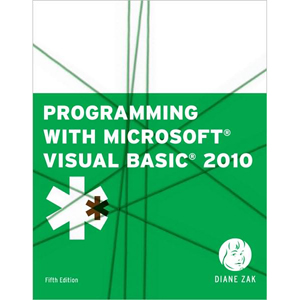Book Description
Professional Visual Studio 2008
Microsoft Visual Studio 2008 is the latest version in the ongoing evolution of the Integrated Development Environment (IDE), and this resource examines the diverse facets of the IDE—from common tasks to intricate functions to the powerful tools that accompany the main code editing and design windows. Written by a unique author duo and offering an in-depth look at the powerful and fascinating features and techniques of the IDE, this book explores each aspect of the development life cycle from the perspective of how Visual Studio 2008 can make your life easier.
Each chapter is packed with examples that illustrate uses for various tools, commands, and shortcuts of Visual Studio 2008. You will gradually learn to identify where a feature is used, conclude how you can use it to its fullest potential, and then seamlessly apply that feature to help solve real-world problems.
What you will learn from this book
- How to create project templates and wizards
- Methods for using IntelliSense, code refactoring, class modeling, and unit testing
- Tips for using DataSets, LINQ, and Synchronization Services for working with data
- How to build web applications using ASP.NET AJAX, Silverlight, and ASP.NET MVC
- Ideas for building Office and Mobile applications, WPF, WCF, and WF projects
- Ways to effectively analyze and identify bugs using the advanced debugging features
- How to automate repetitive tasks using the Visual Studio 2008 add-ins and macros
- Suggestions for using Visual Studio Team System components coupled with Team Foundation Server
- Techniques for building more secure applications
Who this book is for
This book is for programmers who want to become proficient with the latest version of Visual Studio and are interested in the advanced capabilities of the IDE.
Table of Contents
Part I: Integrated Development Environment.
Chapter 1. A Quick Tour.
Chapter 2. The Solution Explorer, Toolbox, and Properties.
Chapter 3. Options and Customizations.
Chapter 4. Workspace Control.
Chapter 5. Find and Replace, and Help.
Part II: Getting Started.
Chapter 6. Solutions, Projects, and Items.
Chapter 7. Source Control.
Chapter 8. Forms and Controls.
Chapter 9. Documentation Using Comments and Sandcastle.
Chapter 10. Project and Item Templates.
Part III: Languages.
Chapter 11. Generics, Nullable Types, Partial Types, and Methods.
Chapter 12. Anonymous Types, Extension Methods, and Lambda Expressions.
Chapter 13. Language-Specific Features.
Chapter 14. The My Namespace.
Chapter 15. The Languages Ecosystem.
Part IV: Coding.
Chapter 16. IntelliSense and Bookmarks.
Chapter 17. Code Snippets and Refactoring.
Chapter 18. Modeling with the Class Designer.
Chapter 19. Server Explorer.
Chapter 20. Unit Testing.
Part V: Data.
Chapter 21. DataSets and DataBinding.
Chapter 22. Visual Database Tools.
Chapter 23. Language Integrated Queries (LINQ).
Chapter 24. LINQ to XML.
Chapter 25. LINQ to SQL and Entities.
Chapter 26. Synchronization Services.
Part VI: Security.
Chapter 27. Security in the .NET Framework.
Chapter 28. Cryptography.
Chapter 29. Obfuscation.
Chapter 30. Client Application Services.
Chapter 31. Device Security Manager.
Part VII: Platforms.
Chapter 32. ASP.NET Web Applications.
Chapter 33. Office Applications.
Chapter 34. Mobile Applications.
Chapter 35. WPF Applications.
Chapter 36. WCF and WF Applications.
Chapter 37. Next Generation Web. Silverlight and ASP.NET MVC.
Part VIII: Configuration and Internationalization.
Chapter 38. Configuration Files.
Chapter 39. Connection Strings.
Chapter 40. Resource Files.
Part IX: Debugging.
Chapter 41. Using the Debugging Windows.
Chapter 42. Debugging with Breakpoints.
Chapter 43. Creating Debug Proxies and Visualizers.
Chapter 44. Debugging Web Applications.
Chapter 45. Advanced Debugging Techniques.
Part X: Build and Deployment.
Chapter 46. Upgrading with Visual Studio 2008.
Chapter 47. Build Customization.
Chapter 48. Assembly Versioning and Signing.
Part XI: Automation.
Chapter 51. The Automation Model.
Chapter 52. Add-Ins.
Chapter 53. Macros.
Part XII: Visual Studio Team System.
Chapter 54. VSTS. Architect Edition.
Chapter 55. VSTS. Developer Edition.
Chapter 56. VSTS. Tester Edition.
Chapter 57. VSTS. Database Edition.
Chapter 58. Team Foundation Server.
Book Details
- Paperback: 1032 pages
- Publisher: Wrox (July 2008)
- Language: English
- ISBN-10: 0470229888
- ISBN-13: 978-0470229880












